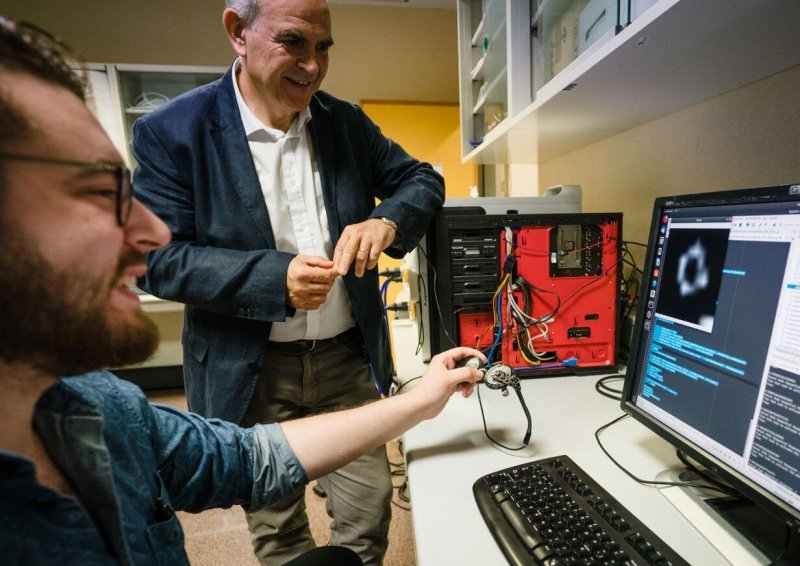[Bernardeta] Gómez was given a six-month window during which she could see a very low-resolution semblance of the world represented by glowing white-yellow dots and shapes. This was possible thanks to a modified pair of glasses, blacked out and fitted with a tiny camera. The contraption is hooked up to a computer that processes a live video feed, turning it into electronic signals. A cable suspended from the ceiling links the system to a port embedded in the back of Gómez’s skull that is wired to a 100-electrode implant in the visual cortex in the rear of her brain.
Using this, Gómez identified ceiling lights, letters, basic shapes printed on paper, and people. She even played a simple Pac-Man–like computer game piped directly into her brain.
…
Gómez’s first moment of sight, at the end of 2018, was the culmination of decades of research by Eduardo Fernandez, director of neuroengineering at the University of Miguel Hernandez, in Elche, Spain. His goal: to return sight to as many as possible of the 36 million blind people worldwide who wish to see again. Fernandez’s approach is particularly exciting because it bypasses the eye and optical nerves.































